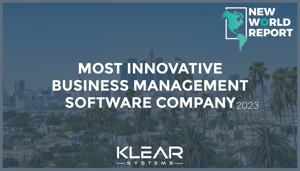
Credit to its millions of users worldwide, Excel has become the go-to tool for handling basic small-business accounting tasks. While spreadsheets can be useful for a startup, they inevitably become cumbersome and detrimental to growth when managing financial data for a thriving organization.
When an business grows to more than a handful of clients and transactions, it is time to move onwards and upwards to a more capable software solution that can do more.
Below are 4 Must-Do's before making the leap:
1) Establish an Upgrade Pro/Con List
As customers, vendors, and transactions increase, managing all that in Excel becomes exceedingly more complicated. Reporting becomes particularly time-consuming when working with large amounts of data due to the fact that it requires manually entering specific formulas to get the information desired.
In addition to being time consuming, spreadsheets are only as accurate as the person entering the information. Humans are easily distracted and, historically, studies show the error rate increases with the complexity of the spreadsheet. A spreadsheet "oops" can have a devastating effect on the integrity data so automating processes with a software solution is really for the benefit of every person in the organization.
Unlike Excel, accounting software solutions are specifically designed to scale with the growth of a business. Because accounting software can pull real-time data from designated financial institutions, businesses save time on data entry and have much more accurate records. Furthermore, reports that come standard in most solutions offer deep insights with just a few clicks.
Accounting software also makes it easier to manage multiple users, allowing admin to restrict access to certain data and providing an audit trail so details about each transaction are readily available allowing errors to be easily tracked and rectified quickly. Other positive aspects of a software upgrade include “anytime, anywhere” access to financial information and easy syncing with other business applications.
Truth be told, while it will be a time-consuming financial investment to upgrade, a spreadsheet can NOT compete and the return on investment will be evident very soon after a new solution is in place.
2) Prepare Company Data
Most accounting programs can readily import Excel files. However, the import does not automatically know which information goes where, so there will be some reformatting to do with some of the data.
The software solution will have requirements for the way information is ordered — for example, if a customer data spreadsheet organizes a company email before phone number and the proposed accounting solution is set to place it after, this data will have to be reordered in the Excel file before it is imported.
The software solution is likely to also have requirements for column headings, date and currency format, character limits, and so on, and it will likely differ for each type of list being imported (Customer, Vendor, Account, etc.).
This may sound time consuming but it is actually a great opportunity to troubleshoot records as well as clean up any data-entry errors that remain.
3) Establish The Best Time for Transition
The obvious ideal time to implement from an Excel-based system to a new accounting software solution is at the end of the fiscal year. The end of the year makes for the smoothest transition due to the fact that all accounts are reconciled, year-end reports are done, and final adjustments have been made.
In reality, an organization can change systems any time.
Ideally, Klear Systems recommends transitioning in a period that is not exceptionally busy for the organization's industry as well as avoiding the end of a month, quarter, or other clear-cut accounting period.
4) Have Patience in the Transition Period
Doing the necessary prep work and choosing the least disruptive “go live” date does not guarantee avoidance of all hiccups during the implementation journey. It is important for an organization to allot time to acclimate to the new workflow and resist the urge to attribute every new challenge to the software. There is a learning curve with all changes and there will be a period of time to be patient and understanding as new processes are established.
During the transition it is important to remember there are many support options available! Organizations should not hesitate to contact the software publisher or a support specialist at Klear Systems when necessary. It is important to be able to learn the RIGHT way and ask questions along the way to build understanding.
Lastly, remember it is highly recommended to run the old and new accounting systems in parallel for a short period until you’re sure the new system is running smoothly.
Ready to make the switch?
Need more information on your options?
Please Contact Us Today!







